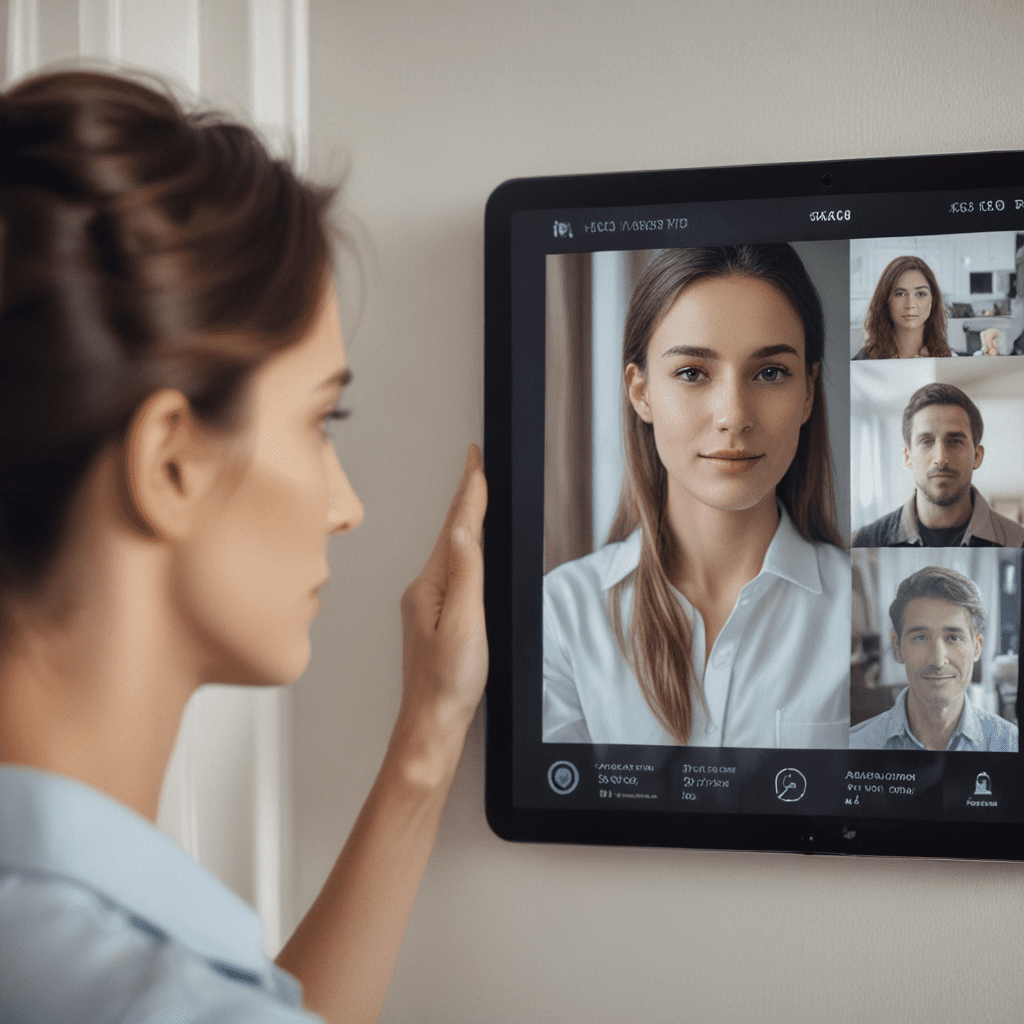
1. Introduction
The rapid advancements in computer vision and artificial intelligence (AI) have revolutionized the field of home security. One of the most notable breakthroughs in this area is the integration of facial recognition technology into home security systems. Facial recognition, a biometric technology that identifies individuals based on their unique facial features, has significantly enhanced the capabilities of home security systems, providing numerous benefits and addressing some limitations of traditional security measures. This article explores the integration of facial recognition in home security systems, examining its advantages, challenges, types of cameras used, and best practices for implementation. It also delves into privacy considerations, ethical implications, future trends, and the potential impact of this technology on the security landscape.
2. Benefits of Facial Recognition in Home Security
Facial recognition offers several advantages that make it a valuable addition to home security systems:
Enhanced Security: Facial recognition provides a more secure and reliable method of identifying individuals than traditional methods like passwords or PINs. It eliminates the risk of unauthorized access or theft due to lost or stolen credentials.
Convenience: Facial recognition systems offer a convenient, hands-free approach to home security. Users can enter and exit their homes without fumbling with keys or remembering complex passcodes.
Real-Time Monitoring: Facial recognition cameras can continuously monitor and record footage, providing real-time alerts when unfamiliar faces are detected. This allows homeowners to respond quickly to potential threats.
- Person Identification: Facial recognition technology can assist in identifying individuals who visit the property, providing valuable information for investigations or in cases of emergency.
3. Challenges and Limitations of Facial Recognition
Despite its benefits, facial recognition technology also faces some challenges and limitations:
Accuracy: Facial recognition systems are not always 100% accurate, especially in low-light conditions or when faces are partially obscured.
Privacy Concerns: The use of facial recognition for home security raises privacy concerns, as it collects and stores sensitive biometric data.
Potential Bias: Facial recognition algorithms can be biased, leading to incorrect or unfair identifications, particularly for certain demographic groups.
4. Types of Facial Recognition Cameras
Facial recognition systems use specialized cameras to capture images for analysis. There are two main types of facial recognition cameras:
2D Cameras: These cameras capture two-dimensional images of faces, which are then processed by facial recognition algorithms.
3D Cameras: 3D cameras use depth-sensing technology to create a three-dimensional model of a face, providing more accurate and reliable recognition.
5. Integration of Facial Recognition into Security Systems
Integrating facial recognition into home security systems requires careful planning and execution. Steps involved include:
Camera Selection: Choosing the appropriate facial recognition camera based on factors like coverage area, lighting conditions, and accuracy requirements.
Placement of Cameras: Strategic placement of cameras to capture clear images of faces, avoiding glare or obstructions.
Software Integration: Integrating the facial recognition software with the home security system, allowing for real-time alerts and access control.
- Data Storage and Management: Implementing secure storage and management practices for collected facial data to comply with privacy regulations.
6. Best Practices for Implementation
To ensure effective implementation of facial recognition in home security systems, consider the following best practices:
Clear Communication: Inform all authorized users about the facial recognition system and obtain their consent before collecting facial data.
Privacy Compliance: Adhere to applicable privacy laws and regulations regarding the collection, storage, and use of biometric data.
Regular Maintenance: Perform regular maintenance on facial recognition cameras and software to ensure optimal performance and accuracy.
- Transparency: Provide clear and transparent information to users about how their facial data is being used and protected.
7. Privacy Considerations
The use of facial recognition in home security raises privacy concerns that must be addressed:
Consent: Obtain explicit consent from all individuals whose facial data is being collected and stored.
Data Security: Implement robust security measures to protect collected facial data from unauthorized access or misuse.
Data Minimization: Collect only the necessary facial data for the intended purpose and delete it when no longer required.
- Transparency: Inform users about the retention period and disposal process for collected facial data.
8. Ethical Implications
The ethical implications of using facial recognition in home security require careful consideration:
Bias: Mitigate potential biases in facial recognition algorithms to ensure fair and unbiased identifications.
Surveillance Concerns: Balance the benefits of security with the potential for excessive surveillance and erosion of privacy.
Consent and Transparency: Obtain informed consent and provide transparency about the use of facial recognition to address ethical concerns.
9. Future Trends and Advancements
Facial recognition technology is continuously evolving, with significant advancements expected in the future:
Improved Accuracy: Ongoing research and development aim to enhance the accuracy and reliability of facial recognition algorithms.
Integration with AI: Integration with artificial intelligence (AI) will enable facial recognition systems to analyze and interpret data more effectively.
Multi-Factor Authentication: Facial recognition may be combined with other authentication methods like voice or fingerprint recognition for increased security.
10. Conclusion
The integration of facial recognition in home security systems offers numerous benefits, including enhanced security, convenience, and real-time monitoring. However, it also presents challenges and limitations, such as accuracy concerns, privacy considerations, and ethical implications. By carefully addressing these issues and implementing best practices, homeowners can harness the advantages of facial recognition while safeguarding their privacy and respecting ethical boundaries.
FAQs
How secure is facial recognition for home security?
Facial recognition provides a high level of security, as it is based on unique biometric data, making it more difficult for unauthorized individuals to gain access.Can facial recognition systems be fooled?
While facial recognition systems are generally accurate, they can be susceptible to spoofing attacks using techniques like masks or high-quality images.What are the privacy concerns associated with facial recognition?
Facial recognition raises concerns about data collection, storage, and potential misuse of sensitive biometric information.
- How can I ensure the ethical use of facial recognition in home security?
Obtain informed consent, implement robust security measures, and mitigate potential biases to ensure ethical and responsible use of facial recognition technology.


